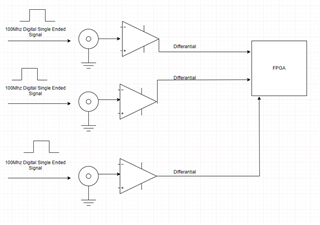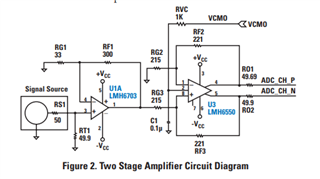Other Parts Discussed in Thread: DS90LV011A, , TINA-TI
Tool/software:
I would like to compare the rising edges of single-ended signals coming from three different sources. The signals have a frequency of around 100 MHz. I want to compare the data from these sources using an FPGA. Since the FPGA and SMA connectors will be physically distant from each other on the PCB, I am planing to convert the signals to differential on the PCB and route them that way. Below, you can see the block diagram.

While researching this topic, I came across TI's High Performance Analog Front Ends app note.

However, I have a few questions, and I would greatly appreciate your help with them:
- Is this circuit the best option for this application?
- What can I do to prevent noise from affecting the 100 MHz input signal?

